At the AIC booth at SC22, we saw two really interesting products. One was a new edge box with the AMD EPYC Genoa. The other is an all-in-one liquid cooler that does not use a pump, instead relying upon boiling and condensing liquid.
AIC EB202-CP AMD EPYC Genoa Edge Box
At first, the AIC EB202-CP does not look too notable. There is some storage and fans, but otherwsie it looks unremarkable from the stock photography.
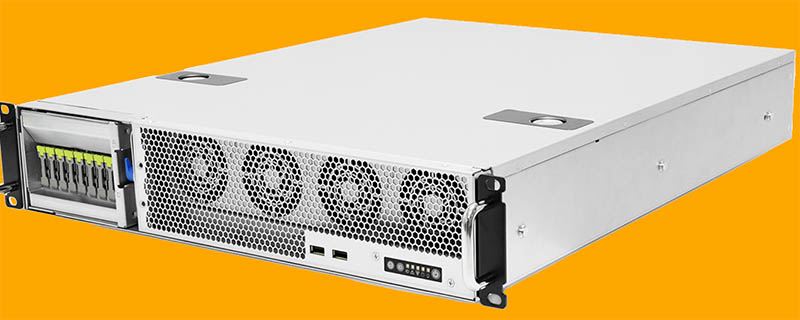
Then we got to see inside. One can see that there is a wall of full-height brackets for GPUs, NICs, and AI accelerators.
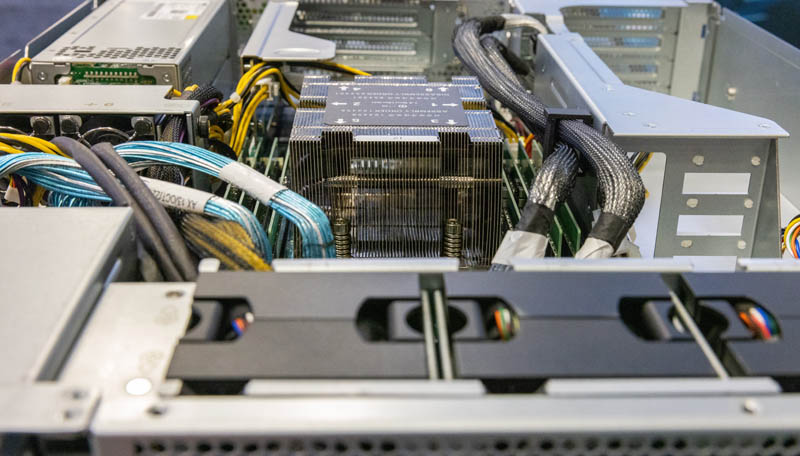
The other big feature is that the AMD EPYC 9004 “Genoa” is in the middle. It is flanked by eight DDR5 DIMM slots. With the new Genoa series there are up to twelve DIMM channels and we have seen designs with 24x DIMMs per CPU. For those thinking that there is a severe reduction in memory bandwidth on this platform, consider that we have gone from DDR4 to DDR5 in the new platform in this generation.
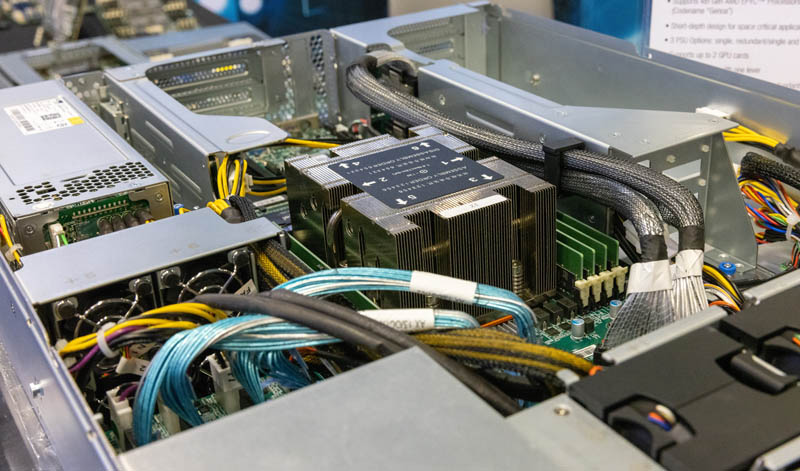
One of the coolest features of this server is the front storage. AIC had E3.S EDSSF storage, but the entire cage is now swappable, not just the drives. One can see the E1.S cage off to the right of this. For edge use cases, this allows both individual drive serviceability as well as allowing physical data migration to occur for applications like simulations and data collection. The larger server can stay, the drives and data can then be removed.
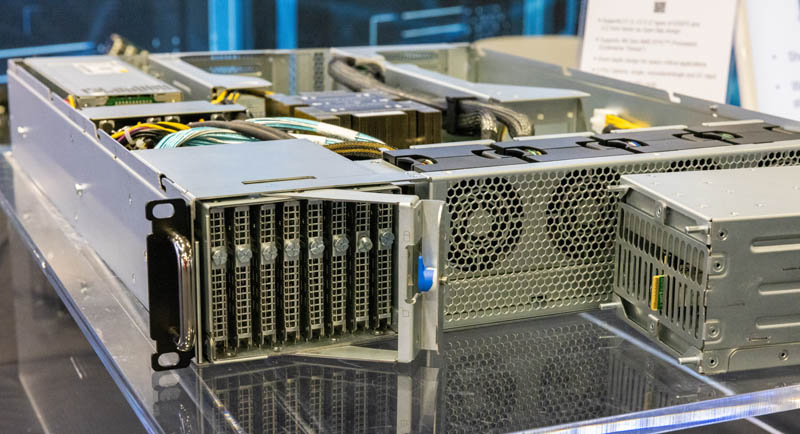
This is just an interesting concept. AIC also has a 2.5″ version for legacy storage.
AIC Closed Loop Two Phase Liquid Cooler
This second one was also really interesting. We are seeing companies need to get creative with cooling technologies due to CPUs pushing higher TDPs. AIC had this closed loop liquid cooling soluiotn that also did not have a pump.
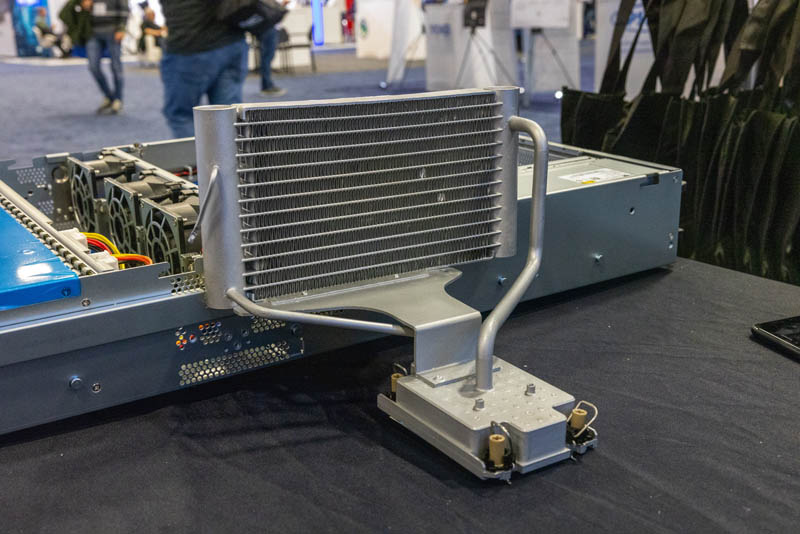
Here is the brochure for the solution. As one can see, the idea is that the liquid boils and then is cooled as it moves through the fins. That condenses the liquid and then it goes back to be boiled off again.
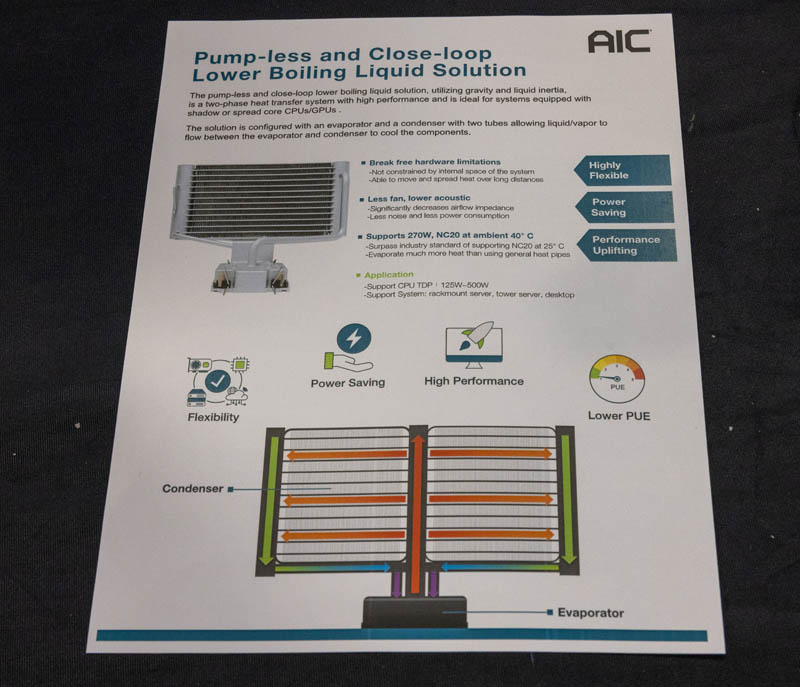
The drawback here is that the radiator is enormous. That limits the amount of systems this can be used in.
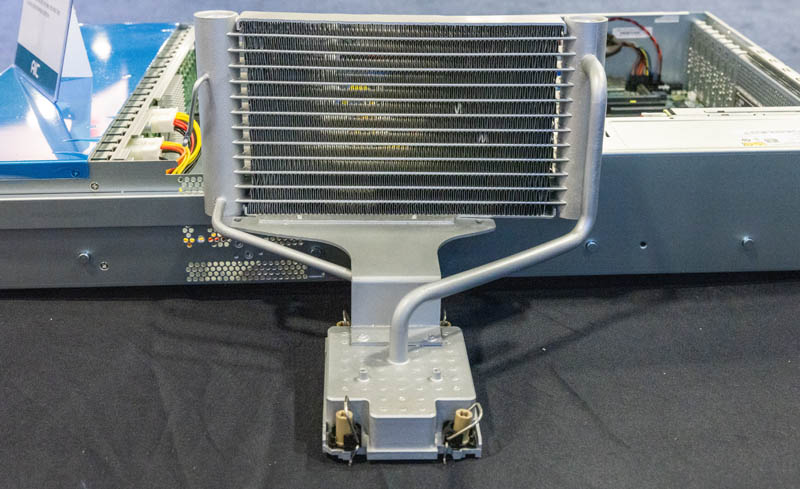
Still, this is a really interesting idea because companies are looking for ways to cool new chips with traditional air form factors.
Final Words
From SC22 this was just some unique hardware that we captured photos of on the show floor. It is great to see some of the innovation in the industry as other parts are standardized. Both the removable Genoa EDSFF cage edge system and the closed loop pump-less two phase liquid cooling system were standouts on the show floor.

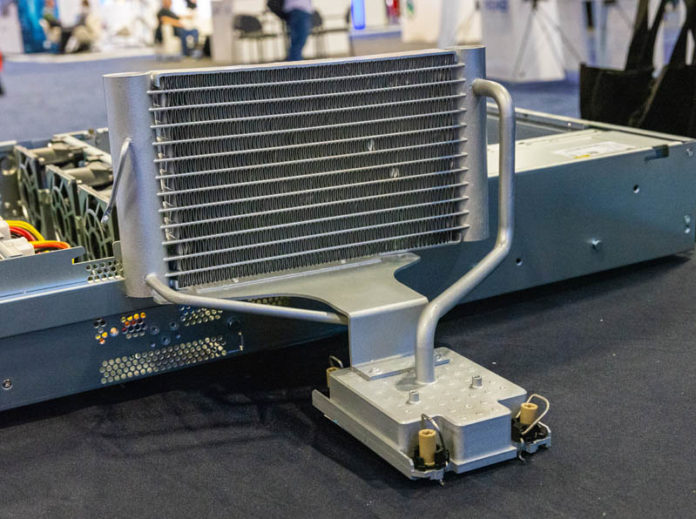



It’d be nice to see a cooling arrangement along those lines make it into some otherwise fairly standard servers.
At work we have a fair number of edge-ish locations that have just enough going on to merit a full depth rack, and get a full height one because the only real constraint is floor space; but have compute and memory demands that have risen substantially more slowly than available density has increased.
In those areas we’d be much better off if the upcoming replacements were in the 4U range; but offered some combination of significantly lower fan power consumption or better tolerance of fairly warm input air; rather than burning 100w+ on screaming little 1U fans in a rack that’s 2/3ds empty.
I wouldn’t necessarily expect that to be a large enough market to get its own ground-up designs; but, especially with all the cabled PCIe, it seems like a situation where most of the components could be shared with 1-2U systems; and the differences could be confined to relatively inexpensive and low complexity sheet metal variations.
Lenovo SR645 V3 seems to have similar cooling solution as standard
https://lenovopress.lenovo.com/lp1607-thinksystem-sr645-v3-server#processors
I think it could work pretty well in a desktop type machines.